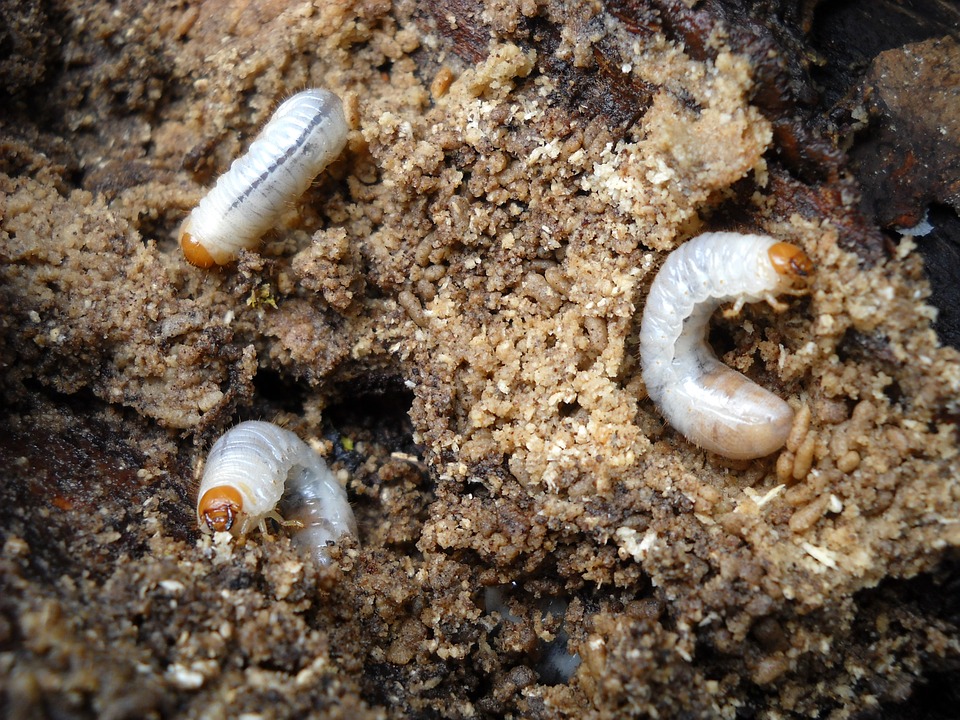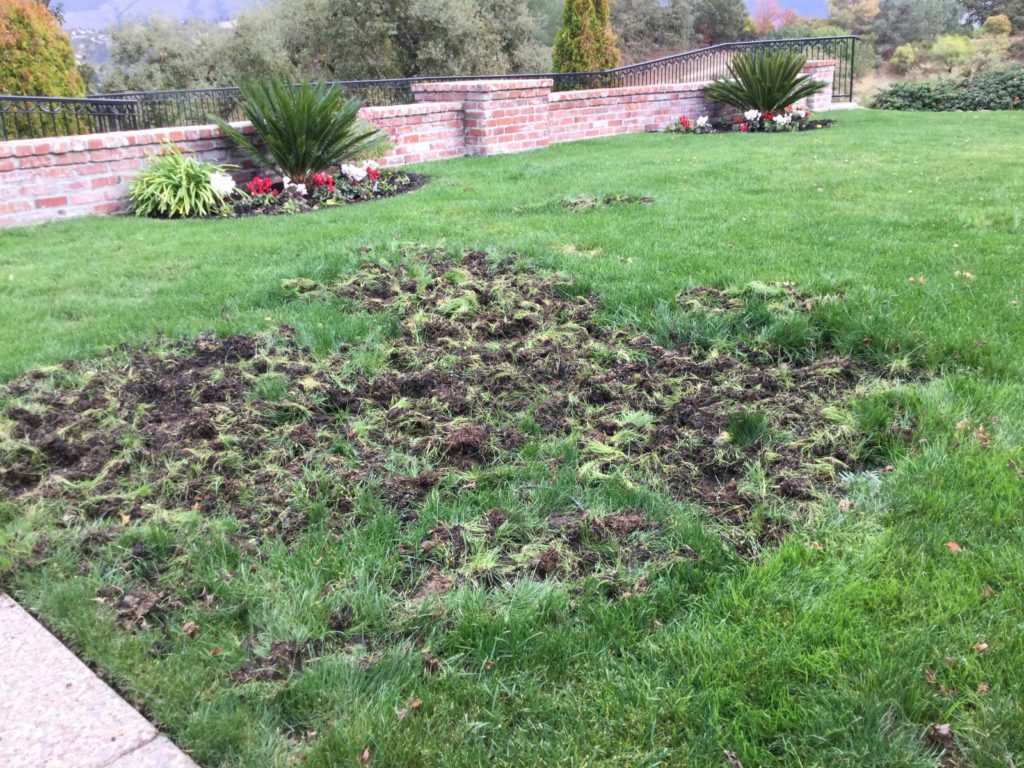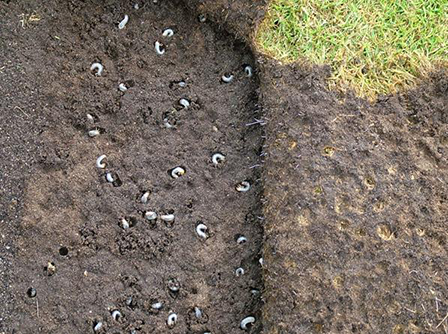This is the time of year where we recommend performing a preventative treatment for white grubs. June bugs will have laid their hundreds of eggs within the soil of our lawns. These larvae hatch and happily feed on the roots of the lawn, causing the grass to easily be pulled loose due to the damaged roots. By August, patches of dead grass may also appear throughout your lawn, wilting suddenly and erasing any hard work put into maintaining your landscape.
Additionally, these grubs serve as the perfect source of food for pesky racoons, skunks, and moles. Such critters will then add their share of damage as they easily pull the root damaged lawn back to gobble up the delicious white grubs.
This preventative treatment is included in the Lawn Care Program or can be done as a one time annual treatment.

Grubs are large C-shaped beetle larvae that feed on roots of turf grass plants. These grubs are white, up to 1 inch (2.5 cm) in length, with dark translucent dorsal stripes, brown head capsules and legs.
We use a granular treatment for this service, the active ingredient is the same as flea and tick medicine that we use for our pets. It prevents the maturation of the larvae so that they do not develop into adults to produce more larvae in the following breeding season. Preventing their maturation will also prevent them from damaging the thatch layer of your lawn and can help prevent predators from digging in your lawn in search of the larger, appetizing grubs later in the year.
 Grubs feed on roots, resulting in irregular dead patches. Symptoms resemble drought stress and persist even where there is sufficient irrigation. Grub activity can cause the ground to feel spongy; extensive root feeding sometimes allows the turf to be rolled back like a carpet. Most damage usually takes place in late summer or early fall. Digging by vertebrate predators, such as crows, raccoons, skunks, and boars, is a common indication of high grub populations. Damage becomes most apparent in late summer or fall.
Grubs feed on roots, resulting in irregular dead patches. Symptoms resemble drought stress and persist even where there is sufficient irrigation. Grub activity can cause the ground to feel spongy; extensive root feeding sometimes allows the turf to be rolled back like a carpet. Most damage usually takes place in late summer or early fall. Digging by vertebrate predators, such as crows, raccoons, skunks, and boars, is a common indication of high grub populations. Damage becomes most apparent in late summer or fall.
 On the topic of racoons, we recommend putting down a product called fruit tree netting. Racoons will pull tufts of grass up and roll back the grass like carpet looking for grubs. However, they don’t like the feeling of the fruit tree netting on their feet so it deters them from pulling your landscape up.
On the topic of racoons, we recommend putting down a product called fruit tree netting. Racoons will pull tufts of grass up and roll back the grass like carpet looking for grubs. However, they don’t like the feeling of the fruit tree netting on their feet so it deters them from pulling your landscape up.